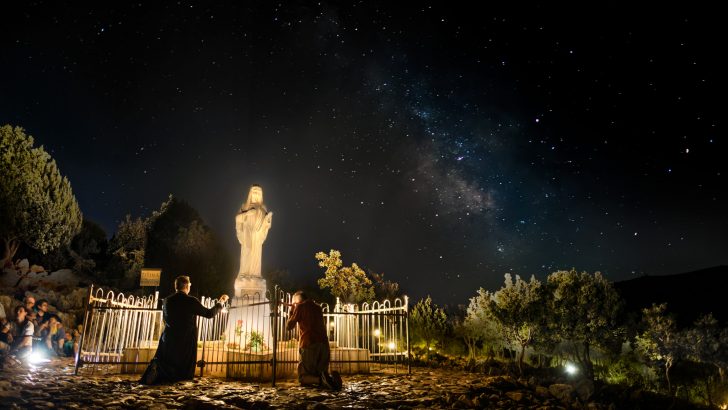Fr Ruairí Ó Domhnaill
There is something about the experience of hearing Confessions in Medjugorje that even the most skeptical of priests has to admit that the unique and sacred quality of this sacramental encounter in this little village in Bosnia Herzegovina is rarely experienced anywhere else.
I have often listened to priests returning from Medjugorje after their first visit who have been deeply moved by what they have experienced while celebrating the Sacrament of Reconciliation there. They speak of the huge numbers queuing to be absolved of their sins, of the significant presence of younger people, and of the experiences of those who have been away from the Church for decades and decades, and who now, in this sacred place, express a deep yearning to return to their faith.
Some of my colleagues account for this phenomenon by saying that wherever people gather to pray and celebrate the Sacraments the grace of God will be evident. They imply that the very obvious renewal of faith which occurs in Medjugorje is not evidence of the presence of Our Lady but simply the ‘natural’ consequence of people coming together to pray.
When I hear this comment from priests I always reply by saying, ‘If Our Lady is not appearing in Medjugorje then you should definitely go there because it means that you could replicate the same back in your own parish.’ No one, as yet, has risen to the challenge!
I travelled to Medjugorje for my very first time when I was only 16 years of age. The seven days which I spent there on that first occasion profoundly touched my life. I was raised in a large Catholic family where we prayed the Rosary each evening and attended Mass each Sunday and whenever we could during the week.
But in Medjugorje I encountered God as real, alive, and almost tangibly close to me. As I prepare these words I have a picture on my desk of my 16-year old self standing outside Saint James’ Church on that first visit. Even today I can remember the profound joy which I experienced in that week and it still moves me to tears as I recall that memory over 30 years later.
When I returned from Medjugorje on that very first trip I remember feeling a certain frustration as I tried to put into words why exactly my visit to that little corner of Communist Yugoslavia had impacted so deeply on me. Others who returned spoke about the sense of peace which they found there among the hills; but for me as a teenager ‘peace’ was too passive a word to describe my own experience.
A number of weeks after my return I remember going to Sunday Mass and hearing the priest proclaiming St Luke’s account of the disciples on the road to Emmaus after the resurrection of Jesus.
As soon as the priest pronounced the sentence,“Did not our hearts burn within us as he walked with us on the road and explained the Scriptures to us,” I realised that those words articulated exactly how I had felt in those first days of pilgrimage. My heart had burned within me as I encountered Christ as real and alive.
That encounter with Christ through prayer is at the heart of the Medjugorje message. Many people comment negatively on the frequency of messages which emanate from Medjugorje. They complain that the messages seem bland and repetitious. But the key to understanding the messages is that they are not simply to be read for information. They are in fact given as an aid to prayer. Mary acts as an anam cara of sorts in Medjugorje. Her messages are given to be prayed over and meditated upon. Mary’s purpose in Medjugorje is to lead us to Christ through our practice of personal prayer. As a priest I see my primary purpose as guiding people in their search for God. One of the most valuable experiences for priests who accompany groups to Medjugorje is not only to experience a deepening of our own relationship with God but to witness first hand as people recognize, often for the first time, the closeness of God to them in their lives.
To witness the change which occurs in each group as they journey through their week in Medjugorje is a wonderful and humbling experience. I am delighted that Pope Francis has sanctioned official pilgrimages to Medjugorje at both parish and diocesan level. It can only be a good thing that the obvious fruits of Medjugorje will now be more abundantly experienced within the wider church community.
Fr Ruairí Ó Domhnaill is the Administrator at Carlow Cathedral.



